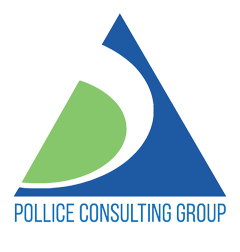Back on March 13, 2020, the COVID pandemic led to lockdowns forcing employees to work from home and within one week the Global Operations Manager for Teramind, Eli Sutton said that; “there was a 300 – 400 % increase in interest relating to employee monitoring solutions at his company.”
A number of employers implemented electronic monitoring systems without alerting their staff and since then electronic monitoring of employees has become more widespread and at times intrusive. Workplace surveillance technologies and technology such as keystroking monitoring, eye movement detectors and workplace surveillance are increasingly common as companies look for ways to track the productivity of remote employees.
Not everyone is saying that companies were wrong in doing this after all; the employee is being paid by the company and the company has a right to know what employee productivity numbers are however; the clear lack of transparency has led to some employee advocates saying that this is a violation of privacy.
As most of us already know; effective October 11, 2022, in the province of Ontario – employers with more than 25 employees must adopt a written monitoring policy and it must be circulated to all employees by November 11, 2022. Employers must now disclose if they are using or intend use a productivity tracking software to keep tabs on their employees.
Should a company decide not to employ a tracking system, their policy much state that. This is part of the Working for Workers Act and it makes the province of Ontario the only province in Canada with legislation on employee monitoring.
The Ontario legislation applies to all employees using company issued devices – whether the employer is tracking the GPS of a delivery truck driver, emails of an office worker or surfing the internet on all company issued devices.
While some industry experts say this is a good first step because it aids in the protection and the productivity of the workers others argue it is invasive. It ought to be noted that employee monitoring is not new to the workplace. In some way, shape or form; monitoring has been used over the past seven to ten years by manufacturing sites, restaurants, fast food establishments and convenient stores and to the best of my knowledge has not been used as a tool to micromanage employees.

Brenda McPhail, Director of Privacy, Technology and Surveillance programs at the Canadian Civil Liberties Association says; “the electronic monitoring policy legislation is a good initial first step because it provides the basis for transparency but, the law does not give workers the ability to challenge the monitoring process. Many workers in Ontario have limited privacy protection at a time when a record number of people are working from home and new technologies have allowed for increasingly intrusive surveillance.”
Given the open – ended definition in the legislation as to what electronic monitoring really is; I advise my clients to write their policies with an expansive definition of electronic monitoring. My thought process centers around the fact that I feel the wording in the provincial legislation is deliberately broad in order to capture a wide range of electronic monitoring practices including sensors that track how quickly a cashier can scan items at the grocery store, how much work an employee can accomplish in the office or in the plant, to tracking of workers delivery truck using a GPS.
So, what might this all mean. I recommend to my clients to give strong consideration to the following procedure in the creation of an Employee Monitoring Policy. Since legislation appears to be open ended and Human Resources will be stretched to protect employers and employees well – being and interests, my recommended outline may circumvent legal challenges and employee unrest.
Policy Requirements:
An employer’s written policy on electronic monitoring of employees. This may be a stand-alone document or it may be part of another document; for example a comprehensive workplace human resource policy and / or procedures manual.
The employer’s written policy must contain the following information:
A statement as to whether the employer engages in electronic monitoring of employees.
“Electronic monitoring” includes all forms of employee and assignment employee monitoring that is done electronically. Some examples include where an employer:
- Uses GPS to track the movement of an employee’s delivery vehicle.
- Use of electronic sensors to track how quickly employees scan items at a grocery store check-out.
- tracks the websites that employees visit during working hours.
- tracks emails, texts and social platforms that an employee may engage during working hours.
What is required to be captured in the employer’s policy is not limited to:
- devices or other electronic equipment issued by the employer.
- electronic monitoring that happens while employees are at the workplace or working on company business from home.
For example, if the employer is electronically monitoring the employee through the employee’s own personal computer that is used for work purposes, the policy must capture that. It applies equally where the employee works from home, at the employer’s workplace, or under a hybrid “workplace / home” model.
Note: If the employer does not electronically monitor employees, the policy must specifically state this.
Where the employer does electronically monitor employees, the policy must also contain the following information:
- A description of how the employer may electronically monitor employees.
- A description of the circumstances in which the employer may electronically monitor employees.
- The purposes for which information obtained through electronic monitoring may be used by the employer.
For example, an employer tracks an employee’s delivery vehicle using GPS.
The policy would include and not be limited to:
- A statement that the employer electronically monitors its employees.
- A description of how the employer may electronically monitor employees. For example, the employer monitors the employee’s movement by tracking the employee’s delivery vehicle through GPS.
- A description of the circumstances in which the employer may electronically monitor employees. For example, the employer monitors the employee’s movement in the vehicle for the entire workday, every workday.
- The purposes for which information obtained through electronic monitoring may be used by the employer. For example, the employer uses the information obtained to assist in setting routes for employee safety, to ensure employees do not deviate from their delivery route during their shift, and to discipline employees who are untruthful about their whereabouts during working hours.
For example, an employer monitors its employees’ emails, online chats and internet surfing.

The policy would include:
- A statement that the employer electronically monitors its employees.
- A description of how the employer may electronically monitor employees. For example, the employer monitors employee emails, online chats and internet surfing through a software program created specifically for this purpose.
- A description of the circumstances in which the employer may electronically monitor employees. For example, the employer may monitor at any time employee emails and online chats.
- The purposes for which information obtained through electronic monitoring may be used by the employer. For example, the employer uses the information obtained through electronic monitoring of employee emails and online chats to evaluate employee performance, to ensure the appropriate use of employer equipment, and to ensure work is being performed during working hours.
The date the policy was prepared and the date any changes were made to the policy.
About The Author.
Nicholas Pollice is President of The Pollice Management Consulting Group located in Niagara, Ontario, Canada. An international facilitator, presenter and consultant, he is known as an operations management leader and coach. Nicholas conducts programs in leadership, supervision, communication, negotiation, conflict resolution and strategic planning. He has been a international consultant since 1989 and is the author of several professional publications. His presentations have been consistently ranked in the top 10% throughout North America. See Nicholas’ bio, his other publications and services on the PMCG. Website at www.pollicemanagement.com


